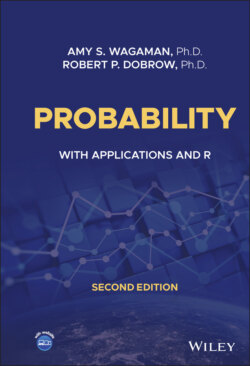Читать книгу Probability - Robert P. Dobrow - Страница 20
1.4 PROPERTIES OF PROBABILITIES
ОглавлениеEvents can be combined together to create new events using the connectives “or,” “and,” and “not.” These correspond to the set operations union, intersection, and complement.
For sets , the union is the set of all elements of that are in either or or both. The intersection is the set of all elements of that are in both and . (Another common notation for the intersection of two events is .) The complement is the set of all elements of that are not in .
In probability word problems, descriptive phrases are typically used rather than set notation. See Table 1.2 for some equivalences.
A Venn diagram is a useful tool for working with events and subsets. A rectangular box denotes the sample space , and circles are used to denote events. See Figure 1.1 for examples of Venn diagrams for the most common combined events obtained from two events and .
One of the most basic, and important, properties of a probability function is the simple addition rule for mutually exclusive events. We say that two events are mutually exclusive, or disjoint, if they have no outcomes in common. That is, and are mutually exclusive if , the empty set.
TABLE 1.2. Events and sets.
| Description | Set notation |
|---|---|
| Either or both occur | |
| Not | |
| implies ; is a subset of | |
| Neither nor | |
| At least one of the two events occurs | |
| At most one of the two events occurs |
FIGURE 1.1: Venn diagrams.
